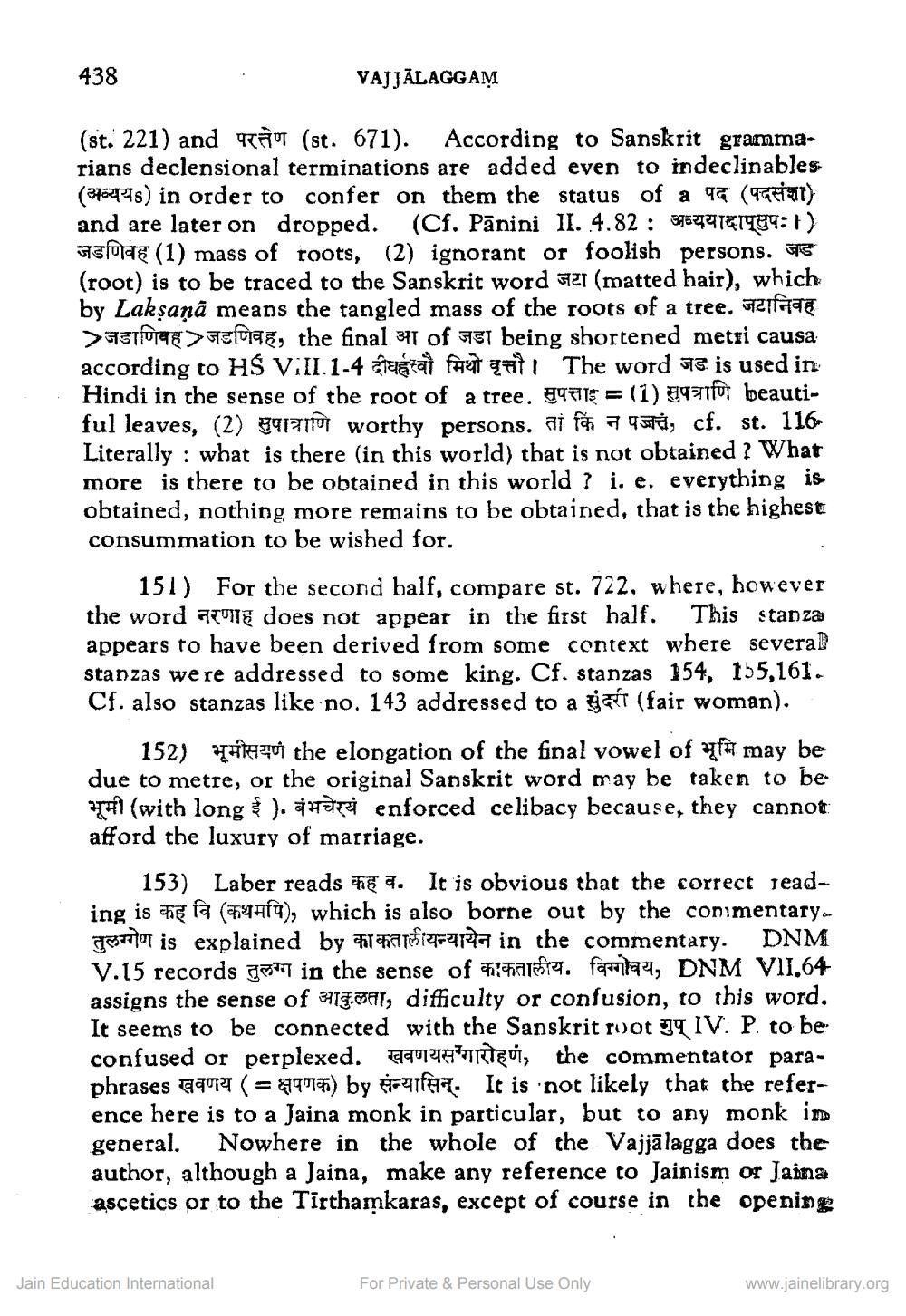________________
438
VAJJĀLAGGAM
(st. 221) and (st. 671). According to Sanskrit grammarians declensional terminations are added even to indeclinables (345224s) in order to confer on them the status of a 97 (9tiat) and are later on dropped. (Cf. Pānini II. 4.82 : 37572741989: 1)
suak (1) mass of roots, (2) ignorant or foolish persons. 375 (root) is to be traced to the Sanskrit word 521 (matted hair), which by Lakşanā means the tangled mass of the roots of a tree. Fatfak
>जडाणिवह > जडणिवह, the final आ of जडा being shortened metri causa according to HŚ Vill.1-4 aastat fent anti The word 78 is used in Hindi in the sense of the root of a tree. 997715 = (1) 7931fur beautiful leaves, (2) 891210 worthy persons. ai fãto 7 9575, cf. st. 116Literally : what is there (in this world) that is not obtained ? What more is there to be obtained in this world ? i. e. everything is obtained, nothing more remains to be obtained, that is the highest consummation to be wished for.
151) For the second half, compare st. 722, where, however the word uit does not appear in the first half. This stanza appears to have been derived from some context where several stanzas we re addressed to some king. Cf. stanzas 154, 155,161. Cf. also stanzas like no. 143 addressed to a ygót (fair woman).
____152) भूमीसयण the elongation of the final vowel of भूमि may be due to metre, or the original Sanskrit word may be taken to be
(with long ).avari enforced celibacy because, they cannot: afford the luxury of marriage.
153) Laber reads ir a. It is obvious that the correct reading is कह वि (कथमपि), which is also borne out by the commentaryतुलग्गेण is explained by काकतालीयन्यायेन in the commentary. DNM V.15 records तुलग्ग in the sense of काकतालीय. विग्गोवय, DNM VII.64 assigns the sense of 311F.SAT, difficulty or confusion, to this word. It seems to be connected with the Sanskrit ruot IT IV. P. to be confused or perplexed. 0914 TREOI, the commentator paraphrases खवणय (=क्षपणक) by संन्यासिन्. It is not likely that the reference here is to a Jaina monk in particular, but to any monk in general. Nowhere in the whole of the Vajjālagga does the author, although a Jaina, make any reference to Jainism or Jaina ascetics or to the Tirthamkaras, except of course in the opening
Jain Education International
For Private & Personal Use Only
www.jainelibrary.org




